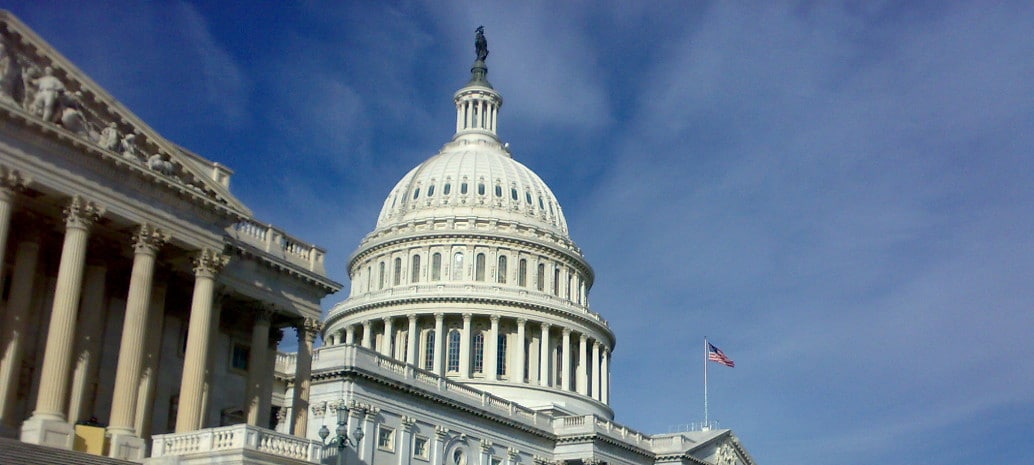Forty-five organizations with clean energy ties sent a letter to Congressional leaders outlining why the clean energy and clean transportation sectors should be supported in must-pass federal legislation.
The California Solar + Storage Association (CALSSA) and the energy efficiency sector made similar appeals this week.
History shows that energy efficiency is a proven job growth catalyst, and with the right stimulus policies, the energy efficiency sector can put in a repeat performance, said Phil Jordan, vice president at BW Research Partnership, the independent research firm that Environmental Entrepreneurs and E4TheFuture commissioned to produce this year’s Energy Efficiency Jobs In America report, which provides an industry snapshot and details the economic impact that federal stimulus support for the energy efficiency industry could have.
According to CALSSA, its shovel-ready blueprint for jobs and economic recovery, released yesterday, would add about 250,000 solar job-years and nearly 50,000 additional storage-related job-years, and it would bring an estimated $1.6 billion in residential energy savings and $2.4 billion in non-residential energy savings per year. CALSSA said that because its plan would add nearly 16 million MWh in solar energy to California’s energy portfolio every year, its plan also avoids an annual total of 12 million metric tons of carbon dioxide.
“A commitment to expanding distributed solar energy and battery storage in California is a no-regrets investment that offers a lasting legacy,” Bernadette Del Chiaro, CALSSA’s executive director said.
At the state level, CALSSA’s plan calls for state leaders to launch a one million solar-charged batteries initiative, launch a resilient schools initiative, protect and expand net energy metering policies, and cut red tape through automated permitting and virtual inspections. The plan also proposes to allow customer batteries to help during grid emergencies, to unleash power of existing ratepayer storage and equity programs and to remove utility barriers for connecting solar and storage systems.
At the federal level, CALSSA’s plan calls for expanding and extending the federal investment tax credit (ITC).
“As Congress looks to recover jobs and spur new economic activity that leads to job growth and consumer savings, they should prioritize extending and expanding the ITC for distributed clean energy,” CALSSA said, adding that stand-alone energy storage should be part of an ITC expansion.
Lessons from the last economic meltdown
With state budgets strapped, strong and effective federal support is more important than ever.
“Many of the current federal incentives are outdated, phasing down, or have already expired,” the multi-sector coalition of clean energy, environmental, conservation, public health and faith organizations said in their letter to Congressional leaders.
Currently, the clean energy sector is struggling to rebound, and 42 states are suffering from double-digit job losses in the clean energy sector relative to pre-Covid levels. “These are good jobs that paid 25% more than the national median wage in 2019,” the letter said.
In addition to extending tax incentives for solar and wind projects, the multi-sector coalition – which includes the Solar Energy Industries Association, the Energy Storage Association, and the American Council on Renewable Energy – asked Congress to modernize the tax incentives for commercial and residential energy efficiency improvements, to make grid-enhancing technologies such as energy storage and high voltage transmission, eligible for these tax incentives as stand-alone technologies.
The multi-sector coalition is also requesting that Congress extend the tax credit for alternative fuel infrastructure and revive the tax credit for domestic clean energy manufacturing, extend and modify the EV tax credit to ensure broad consumer accessibility, and provide a direct pay option for each of these credits to maximize their utilization by the broadest range of stakeholders.
“Congress can play a critical role to help accelerate our economic recovery, put people back to work, and lay the foundation for a cleaner, healthier and more prosperous future. We continue to experience a rise in extreme weather disasters, with scientists around the world sounding the alarm that we are almost out of time to avoid the most catastrophic impacts of climate change,” the coalition said. Environmental justice communities have borne disproportionate public health impacts from a legacy of fossil fuel-dependent electricity production, they noted.
The ITC provides consumers with a 26% credit for solar and energy storage systems in 2020, before it steps down to 22% in 2021 and expires for residential systems in 2022. For commercial systems, the ITC drops to 10% in 2022.
This content is protected by copyright and may not be reused. If you want to cooperate with us and would like to reuse some of our content, please contact: editors@pv-magazine.com.








By submitting this form you agree to pv magazine using your data for the purposes of publishing your comment.
Your personal data will only be disclosed or otherwise transmitted to third parties for the purposes of spam filtering or if this is necessary for technical maintenance of the website. Any other transfer to third parties will not take place unless this is justified on the basis of applicable data protection regulations or if pv magazine is legally obliged to do so.
You may revoke this consent at any time with effect for the future, in which case your personal data will be deleted immediately. Otherwise, your data will be deleted if pv magazine has processed your request or the purpose of data storage is fulfilled.
Further information on data privacy can be found in our Data Protection Policy.